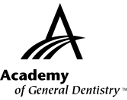|
Exercise No. 371
Subject Code: 704
Implant Placement Surgery
The 15 questions for this exercise are based on the article, Maxillary sinus and success of dental implants: an update, on pages 47-54. This exercise was developed by Charles Martello, DDS, FAGD, in association with the General Dentistry Self-Instruction committee.
|
Reading the article and successfully completing this exercise will enable you to:
- enhance knowledge of the anatomy, physiology, and common pathological conditions of the maxillary sinus;
- understand surgical techniques and materials used in the sinus augmentation procedure; and
- develop insight in patient selection and practices to promote successful sinus augmentation.
|

